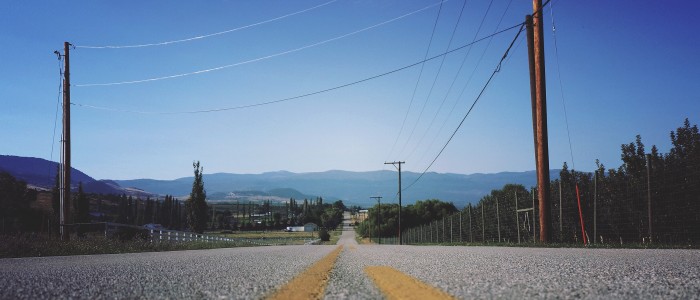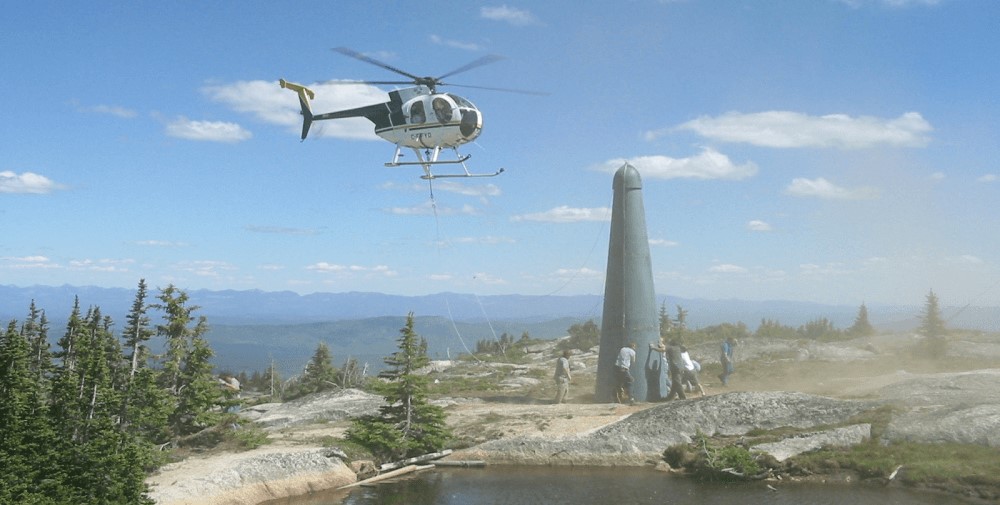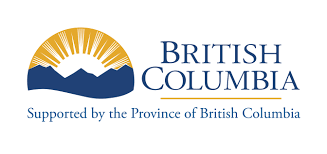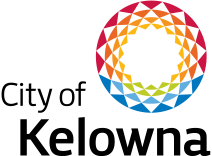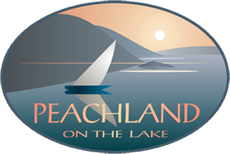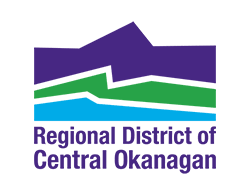About the Repeater Lists
The repeaters on this list are primarily in the Interior of British Columbia, outside the Lower Mainland and Vancouver Island.
For the convenience of the travelling ham, there are a few exceptions for other areas.
- Lower Mainland and Vancouver Island - - - A small selection of some prominent repeaters are listed.
- Alberta - - - A selection of repeaters in areas bordering on British Columbia, mostly covering the Rocky Mountains and foothills.
- USA - - - Repeaters whose signals reach over the border into British Columbia.
In the sections below, you will find:
- A brief description of each region is given, along with explanations of the abbreviations for repeater sponsors, clubs, and linked repeater networks.
- Links to other websites containing further information are given where available.
- Some repeaters may have coverage spanning more than one region, so will be listed in all covered regions.
Information is updated frequently for repeaters which can be accessed from the Okanagan area. Information for other areas is updated when possible as amateurs pass through these areas and report on active repeaters heard in the area. Up to date information is always appreciated. There is no guarantee that a specific repeater on this list will be active at all times, but the dedicated amateur radio volunteers who install these repeaters try their best to keep them operational.
The repeater lists are maintained by Doug VE7VZ, and John VE7JXC. If you see any incorrect information, please let us know (email for either callsign found on qrz.com).
Access Tone
Some repeaters require a tone be present (at a low audio level, with a frequency between 67 and 254 Hz) on an incoming signal before it will activate the repeater. This is also referred to as "Tone Encode". Depending on the manufacturer of the radio, this may also be referred to as "CTCSS Tone", or "PL Tone".
Optional Squelch Tone
Some repeaters transmit a tone on their output frequency. You will hear the repeater regardless of whether you set this tone in your radio or not. The advantage of programming this tone on the receive of your radio is that any other noise on the frequency, as may occur when the repeater is not active, will not break the squelch and be heard. Sometimes more than one repeater can be received on the same frequency. Setting the squelch tone allows to you choose which repeater you want to hear. This is also referred to as "Tone Decode". Depending on the manufacturer of the radio, this may also be referred to as "CTCSS Tone Squelch", or "PL Tone Squelch".
Repeater Status
Active repeaters recently heard by OCARC members and other travellers are shown with a green "On Air".
Repeaters which are believed to be active, but not heard by an OCARC member or other traveller are shown as "On Air*".
Repeaters which are verified as temporarily down or off the air permanently are shown with a red "Off Air".
Other repeaters with issues or uncertain status, are shown as "Problems", "Planned" or "Unknown".
Map of Repeater Regions
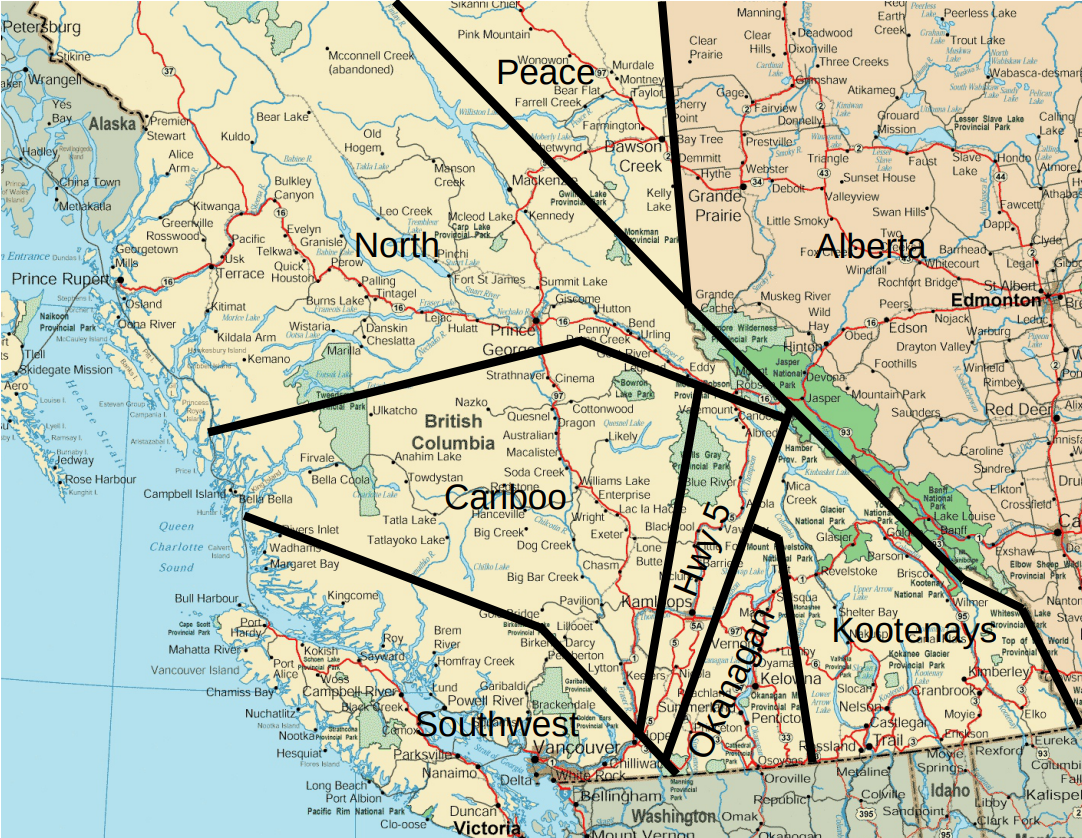
There are four main linked repeater systems in BC Interior
The North and the Peace Regions are linked by the Northern BC Repeater System. PGARC Map.
The Cariboo and northern parts of Hwy 5 are covered by the Cariboo Chilcotin Repeater Network. CCARS Map.
The Okanagan, West Kootenays and the southern parts of Hwy 5 are covered by the Southern Interior Repeater Group Network. SIRG Map.
The East Kootenays have a system of linked repeaters covering Cranbrook, Creston, Invermere, and Sparwood. Golden is expected to be added in the future.
On Sunday morning, the North, Peace, and Cariboo systems are linked together for the Northern BC 2m Net.
Repeaters (OCARC)
These repeaters are maintained by the Orchard City Amateur Radio Club for the benefit of all amateurs in the Central Okanagan.
Only repeaters owned and maintained by the club are listed here. Other repeaters in the area, either maintained independently by club members, or by other individuals and clubs, are listed instead in the Okanagan Repeaters list below.
OCARC | Orchard City Amateur Radio Club http://ocarc.ca/
Repeaters (Okanagan)
These repeaters either have their main coverage in parts of the Okanagan Valley, or their main coverage in areas no more than an hour's drive away, with some coverage extending into at least a part of the Okanagan.
This includes repeaters covering Highway 97 from the Osoyoos to Monte Creek, 97A to Sicamous, Highway 1 from Monte Creek to Eagle Pass, and Highway 97C, the Coquihalla Connector.
NORAC | North Okanagan Radio Amateur Club http://norac.bc.ca/ and https://www.facebook.com/NORAC.BC.CA
KARC | Kamloops Amateur Radio Club https://karc.ca/
SIRG | Southern Interior Repeater Group http://sirg-bc.ca/index.html
PARC | Penticton Amateur Radio Club http://ve7prc.ca/
SARC | Shuswap Amateur Radio Club http://sarc.ca/
OARC | Oliver Amateur Radio Club http://ve7olv.ca/ and https://www.facebook.com/ve7olv
OkCARC | Okanogan County Amateur Radio Club (link broken?)
SRG | Spokane Repeater Group http://srgclub.org/
MVARC | Methow Valley Amateur Radio Club https://www.mvhams.net/
(IPARN) | InterProvincial Amateur Radio Network (no longer in operation)
Repeaters (Cariboo)
These repeaters have coverage in the Cariboo from Lytton to Quesnel, and Highway 20 west of Williams Lake.
A map showing many repeaters in the Cariboo Chilcotin can be found at http://www.ccars.ca/repeaters.
CCARS | Cariboo Chilcotin Amateur Radio Society https://www.ccars.ca/
QAROS | Quesnel Amateur Radio Operators Society https://www.facebook.com/groups/1044735842272403
PGARC | Prince George Amateur Radio Club http://pgarc.ca/
Repeaters (Kootenays)
These repeaters have coverage in the East and West Kootenays.
This includes repeaters on Highway 3 from Anarchist Summit (east of Osoyoos) to the Alberta border, Highway 95 from Cranbrook to Golden, and Highway 1 from Revelstoke to Golden.
EKARC | East Kootenay Amateur Radio Club ekarc.ca/index.html
WKARC | West Kootenay Amateur Radio Club (New Site! >) wkarc.ca/
BVARC | Beaver Valley Amateur Radio Club http://www.qsl.net/ve7caq/
GFARC | Grand Forks Amateur Radio Club http://www.gfarc.20m.com/ (link broken?)
KBARA | Kamiak Butte Amateur Radio Association https://kbara.org/
WRN | Wild Rose Network http://ve6cpk.com/wildrose/
Repeaters (North)
These repeaters have coverage east and west from Prince George on, or near, Hwy 16, and north to Pine Pass (Rocky Mtns) on Hwy 97.
A more complete map showing most repeaters in Prince George and northern BC can be found at http://pgarc.ca/wp-content/uploads/2024/09/REPEATER.pdf.
BVARS | Bulkley Valley Amateur Radio Society http://www.bvars.org/
PGARC | Prince George Amateur Radio Club http://pgarc.ca/
Repeaters (Peace)
This includes repeaters on the east side of the Rockies in north east British Columbia, including repeaters on Hwy 97 from Pine Pass, through Dawson Creek and up the Alaska Highway.
NCHR | North Country Ham Radio http://nchamradio.ca
For those travelling further north, a map showing the Yukon system of linked repeaters can be found at http://yara.ca/repeaters/repeaters.htm and a detailed list of highway coverage at http://www.yara.ca/repeaters/Highway%20Coverage%20Repeater%20List.pdf
Repeaters (Southwest)
The Lower Mainland / Vancouver Island / Puget Sound area has over 500 repeaters.
This is a select list of repeaters which have coverage when entering or leaving the Lower Mainland, in Hope and in the Whistler Corridor (Highway 99 North), as well as a sampling of commonly used high profile repeaters heard in the Lower Mainland.
A useful list of BC repeaters in the Lower Mainland can be found at https://bcarcc.org/vancouver.pdf.
A useful list of BC repeaters on Vancouver Island can be found at https://bcarcc.org/vanisland.pdf
A useful list of WA repeaters, many of which cover the Lower Mainland, can be found at https://www.wwara.org/coordinations.
SqARC | Squamish ARC https://squamisharc.wordpress.com/
SSIARC | Saltspring Island Amateur Radio Club http://www.ssiarc.ca/
MRARC | Maple Ridge Amateur Radio Club http://mrarc.net/
FVARESS | Fraser Valley Amateur Radio Emergency Service Society http://www.ve7rva.ca/
Repeaters (Alberta)
Selected repeaters in Alberta are listed, with an emphasis on coverage in the Rocky mountains and foothills.
More extensive lists can be found at the club websites below.
WRN | Wild Rose Network http://ve6cpk.com/wildrose/
CARA | Calgary Amateur Radio Association https://www.caraham.org/Repeaters
SARA | Southern Alberta Repeater Association https://saralink.ca/index.php/network/
CAARC | Central Alberta Amateur Radio Club https://caarc.ca/club-repeater-info/
FARS | Foothills Amateur Radio Society http://fars.ca/repeaters/
Further links to Calgary and Area radio clubs are listed at: http://www.calgary.ve6hams.com/Clubs.html (link broken?)
Repeaters (Hwy 5 Corridor)
These repeaters have coverage in the North Thompson along Highway 5 north of Kamloops, and the parts of Highway 16 east of McBride.
KARC | Kamloops Amateur Radio Club https://karc.ca/
PGARC | Prince George Amateur Radio Club http://pgarc.ca/
WGARC | Wells Gray Amateur Radio Club http://wellsgrayarc.ca/index.html and https://www.facebook.com/WellsGrayARC
Repeaters (Hwy 1)
A selection of repeaters with wide coverage of the Trans Canada Highway from Victoria BC to Calgary AB.
Spotty coverage between Yale and Boston Bar in the Fraser Canyon. No coverage between Three Valley Gap (Eagle Pass) and Quartz Creek Bridge (east of Rogers Pass). No coverage between the west entrance of Yoho Park and Castle Junction (west of Banff). 146.520 simplex is suggested for these areas.
Repeaters (Hwy 3)
A selection of repeaters with wide coverage of the Crowsnest Highway from Hope to the Alberta border.
No coverage between Hope Slide and East Gate (Manning Park). 146.520 simplex is suggested in this area.
Repeaters (Hwy 97)
There is no repeater list specifically for Highway 97, because of the number of repeaters accessible along this route. There is continuous coverage by at least one repeater (and usually several) from Osoyoos to north of Ft St John, with one small gap. Coverage may be spotty in the vicinity of Cache Creek, but a good mobile station should still be able to bring up repeaters in Kamloops or Clinton. There may be no coverage on the Chetwynd side of Pine Pass until approx 40 km west of Chetwynd. There is currently no confirmed repeater coverage from approx. 40 km north of Ft. St. John to the Yukon Border. For suitable repeaters along the route, the repeater lists should be consulted in the order below, from south to north.
Okanagan - Hwy 5 - Cariboo - North - Peace
Coverage on parts of Hwy 97C (Okanagan Connector) can be spotty, but at least one repeater usually has decent coverage. Try Iron Mtn (146.660), Coquihalla (146.980), or Kamloops (146.960 or 147.320).
Repeaters (Hwy 16)
Good coverage from the Alberta border to Burns Lake is provided by a system of linked repeaters on the PG Network. This network can also be connected to the Bulkley Valley Network, which extends coverage from Houston thru to Terrace. Repeater coverage in Kitimat and Prince Rupert is uncertain at this time, but the relevant repeaters are listed. See the North repeater list for details.
Coverage Maps
Coverage maps are an approximate guide only. Coverage may vary from that shown in the maps due to a number of factors, including:
- Transmitter power for both the repeater and the user
- Transmit and receive antenna gain for both the repeater and the user
- Reflections off mountains and buildings
- Refraction over and around local terrain
- Attenuation due to buildings and vegetation
- Distortion due to multipath propagation
(Most of these maps were made using the excellent mapping tool, Radio Mobile Online, created by VE2DBE.)
RF LINKED REPEATER NETWORKS
Many repeaters can be joined together by using additional radio links (usually on mountain tops) to greatly increase their coverage. In many cases VHF (2m) repeaters are linked together using backbone frequencies on UHF (70cm). Some links are permanently on, while others may be turned on or off using DTMF codes.
Examples of this type of network:
- Southern Interior Repeater Group (SIRG) (Vernon Hub (UHF) - Edgewood (Scaia Mtn))
- West Kootenay ARC System (Castlegar - Nelson - Crawford Bay) (http://wkarc.ca for details)
- Okanagan Link System (Big White - Kelowna/Penticton (Okanagan Mtn) - Coquihalla)
- Kamloops ARC System (Mt Lolo - Dufferin - Logan Lake) (http://karc.ca for details)
- East Kootenay ARC System (Invermere - Cranbrook - Sparwood - Creston) (http://ekarc.ca for details)
- Cariboo Network (http://ccars.ca/repeaters for details)
- Northern BC Repeater Network (including Prince George, Bulkley Valley and Peace Region Networks) (http://pgarc.ca/wp-content/uploads/2024/09/REPEATER.pdf for details)
Some of these systems can be interlinked to provide a larger network. For example:
- Kamloops, Okanagan and West Kootenay systems can be linked together by connecting each to SIRG.
- Cariboo and Northern BC Repeater Networks can be linked together.
- The East Kootenay system can be accessed from any IRLP node by connecting to node 1660.
SIRG Network (as of 2022 Oct)
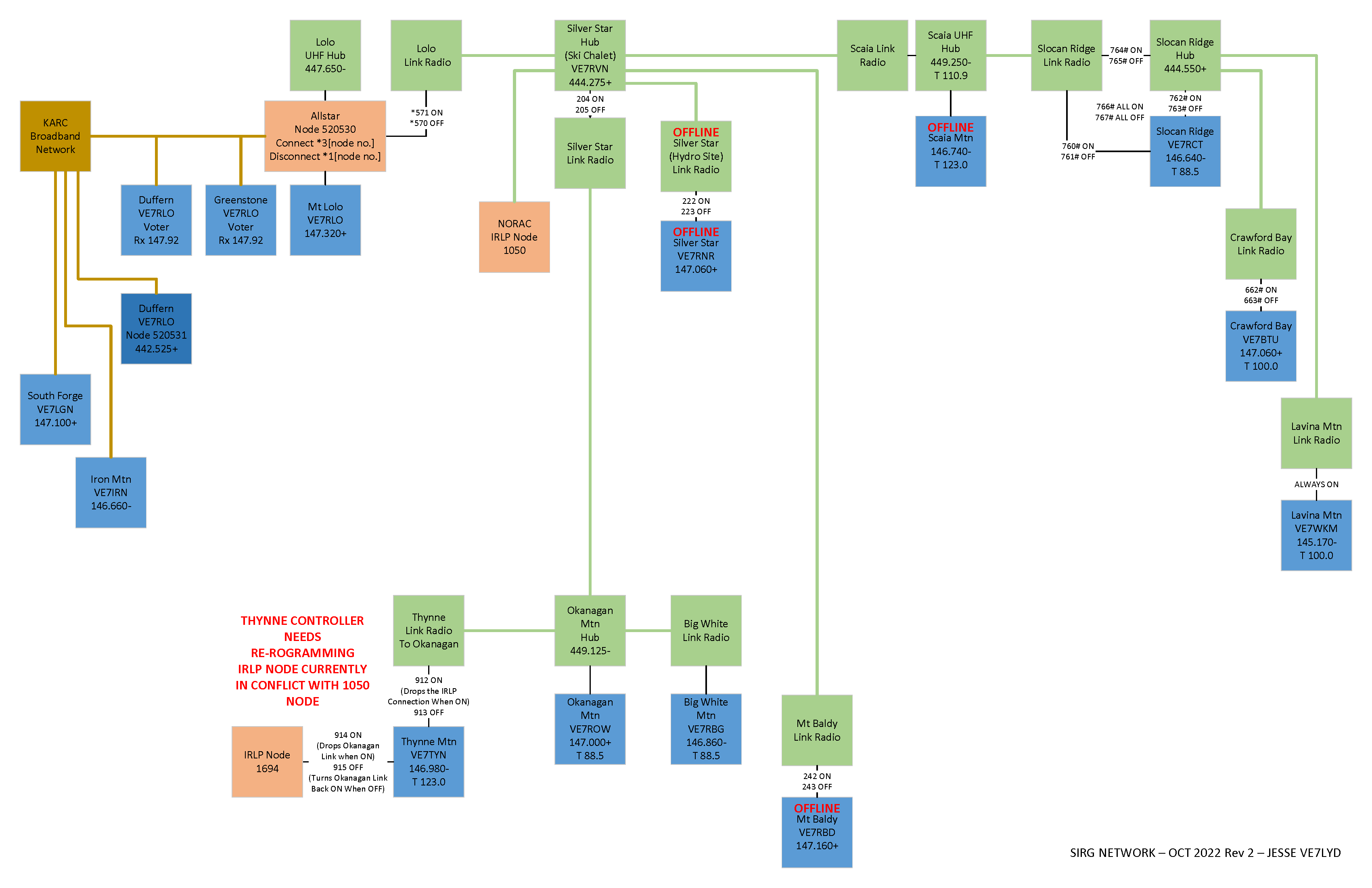
A higher resolution map of the SIRG network (easier to read) can be found at: SIRG Map.
In 2024, the Mt Lavina repeater was destroyed by a wildfire, and is no longer available.
INTERNET LINKED REPEATER NETWORKS
Many repeaters can be linked together through the internet to greatly increase their coverage. The exact method of linking depends on the type of interface between the radio and the internet. Both repeater based systems and simplex nodes can be used to link one local radio coverage area to another over an internet connection.
Wires-X Node Status (and Rooms)
Yaesu System Fusion repeaters provide local digital C4FM (and analog FM) coverage. Some repeaters also have an associated Wires-X node which allows the digital activity (but not the analog) to be linked to other nodes. The current status of any node can be checked on the Yaesu Active Node ID List.
http://www.yaesu.com/jp/en/wires-x/id/active_node.php
While a WIRES-X node can only make a single connection (for example to another node), multiple nodes can connect to a common Room, which combines activity from all connected nodes in a single channel which can be monitored on any of the connected nodes.
A list summarizing available Rooms is found at: https://www.yaesu.com/jp/en/wires-x/id/active_room.php
Another website with useful links is: https://http://wiresxrooms.com/
D-Star Repeaters (and Reflectors)
D-Star repeaters provide local digital coverage (no analog FM). multiple D-Star repeaters can connect to a common Reflector which combines activity from all connected repeaters in a single channel which can be monitored on any of the connected repeaters. The first D-Star repeaters could only connect to other D-Star repeaters using the DPlus system (e.g. REF0001C). This is still the case for the D-Star repeater stack located at Landmark in Kelowna. Other systems now exist (XRF, DCS, XLX), which can be accessed through MMDVM repeaters (see below). A good expanation of the differences can be found at: https://www.f4fxl.org/ref-xrf-dcs-xlx-whats-the-difference/
A list summarizing available D-Star Reflectors, with links to their status, including the other connected repeaters, is found at: http://apps.dstarinfo.com/reflectors.aspx
IRLP Node Status (and Reflectors)
For repeaters where an IRLP node is listed as active for network connections, the current status of the node can be checked on the IRLP status page, listing nodes by country. All IRLP connections are accessed over the air using analog FM.
http://status.irlp.net/index.php?PSTART=5
While a node can only make a single connection (for example to another node), Multiple nodes can connect to a common Reflector, which combines activity from all connected nodes in a single channel which can be monitored on any of the connected nodes.
A list summarizing available IRLP Reflectors is found at: http://status.irlp.net/
Details on the nodes connected to each reflector are found at: http://status.irlp.net/index.php?PSTART=1
MMDVM (Multi-Mode Digital Voice) Repeaters
MMDVM repeaters provide local digital coverage (no analog FM) and allow connections to a number of different digital networks.
Many MMDVM repeaters (and simplex nodes) are based on the Pi Star Digital Voice Software. https://www.pistar.uk/
These repeaters can accept several digital voice formats (if the repeater is configured appropriately), and connect to a corresponding network.
DMR: Brandmeister Talkgroups. https://www.pistar.uk/dmr_bm_talkgroups.php
DMR: Repeaters in British Columbia. https://bcdmr.wordpress.com/repeaters
NXDN: NXDN Reflectors. https://www.pistar.uk/nxdn_reflectors.php
P25: P25 Talkgroups. https://www.pistar.uk/p25_reflectors.php
C4FM: YSF Reflectors (similar to, but independent of, Yaesu WIRES-X Rooms). https://www.pistar.uk/ysf_reflectors.php or https://register.ysfreflector.de/
D-Star: XLX Reflectors (similar to, but independent of, DPlus Reflectors, but also compatible with XRF and DCS D-Star reflectors)
MMDVM repeaters are commonly configured to allow several (or all) of the digital modes listed, but in general bridging between nodes is not possible. For example, A DMR user may talk to other DMR users and nodes on the network, but cannot access D-Star or C4FM nodes. Similarly a C4FM user would be limited to talking to users and nodes in the C4FM network only.
AllStar Node Status (and Network Bubbles)
For repeaters where an AllStar node is listed as active for network connections, the current status of the node can be checked on the AllStar status page. AllStar connections are accessed over the air using analog FM. If the AllStar node is connected to other nodes, a Network Bubble map, showing all the interconnected nodes on a single page is also available.
Worldwide map of active AllStar nodes: allstarmap.org
Status Page: http://stats.allstarlink.org/
Canada Hub: https://thecanadahub.ca/

